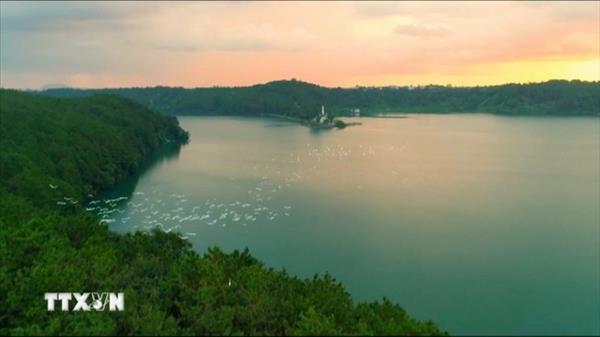The problem stems from a lack of land sources for resettlement as well as budget to compensate relocated residents.
A report by local authorities said the city is struggling to find land to resettle the residents. Most do not want to settle far from the city centre.
During a visit by Chairman of the provincial People’s Committee Phan Ngoc Tho, members of the community told Tho that the resettlement apartments built in Huong So ward did not meet living standards, so they refused to move.
Tho ordered related agencies to speed up the work as earlier this year the central government defined it a major task for the local government in Thua Thien-Hue in 2018.
Meanwhile, the provincial People’s Committee said the estimated cost to evacuate about 15,000 people from the wall is 2.2 trillion VND (95 million USD), a significant burden on the local budget.
A report prepared by the committee said there are total 3,800 families living on top of the walls, which were built by the Nguyen Dynasty (1802-1945) to protect the former citadel.
Social surveys show that these communities appeared around 1975, as residents attempted to settle after the war and Independence Day. In 1999, heavy flooding hit Hue and sent more families to the citadel walls after their homes and boats were destroyed.
According to Hue Monuments Conservation Centre, a local government body that manages relics built by the dynasty, the citadel wall is recognised by UNESCO as part of the heritage status offered to the monument system belonging to the dynasty in Hue.
The centre’s director Phan Thanh Hai said living on the wall is a violation of laws protecting heritage sites. “The weight of the families living on top of the walls causes damage and subsidence,” he said.
The residents have different ways of occupying the wall. The majority of them construct temporary houses on top and erect wooden ladders to reach them. Many others have built concrete structures, with some even looking likes villas, breaking part of the wall to make entrance alleys.
Others have made use of collapsed sections, clearing the debris for housing or demolishing the wall themselves to construct homes. Residents living near the wall have also used space on top for farming.
The wall was originally built with thick brick walls, at a width of 2m, with soil in the middle.
Local authorities designed measures to evacuate the residents from the wall in 1993, when Hue first received the UNESCO title for its monuments. However, such efforts have been unsuccessful.
In 2011, the province People’s Committee allocated funds for the conservation centre to move more residents, but it managed to relocate just 220 families.
VNS/VNP

















